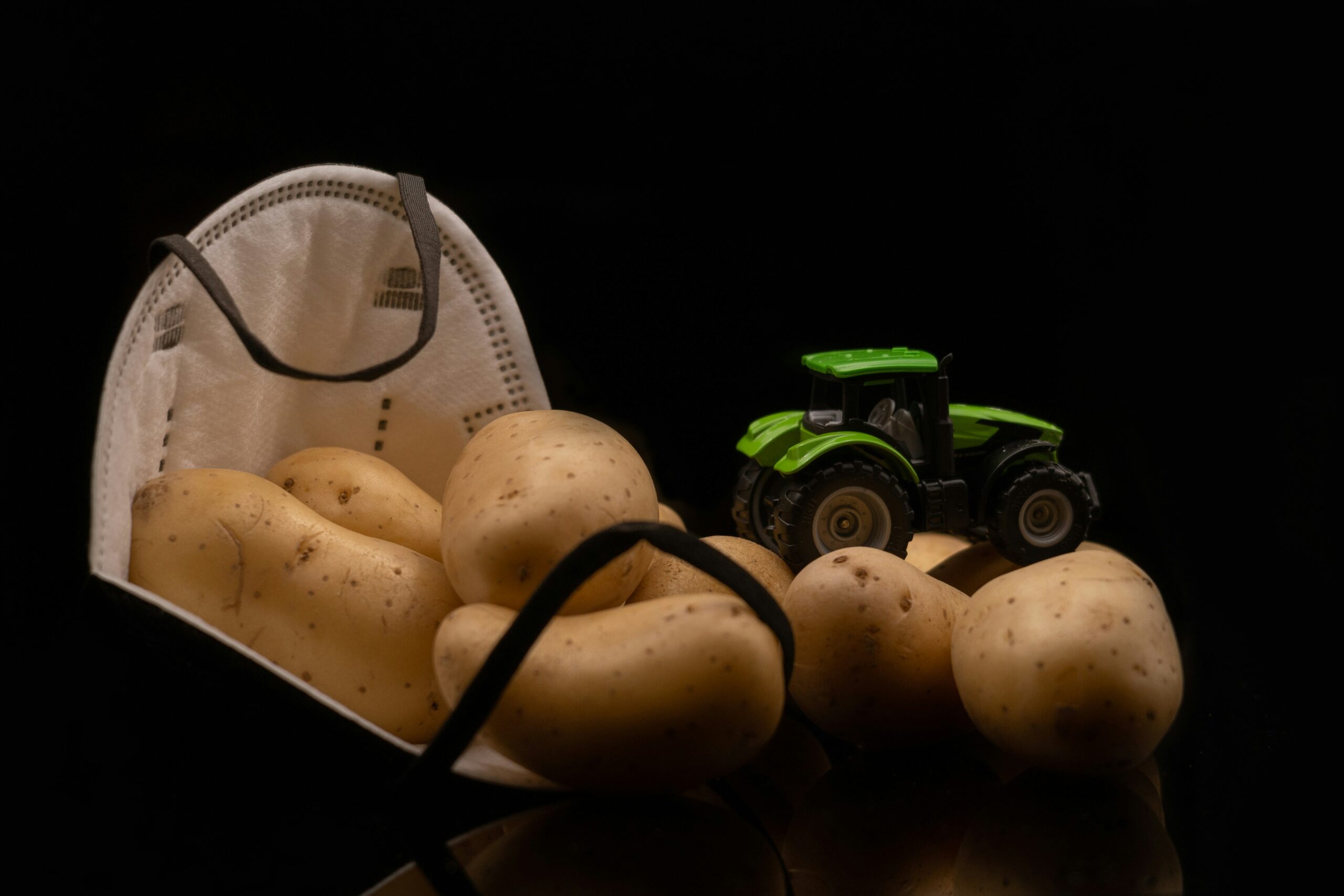
Potatoes (Solanum tuberosum) represent one of the most important food commodities globally, ranking as the world’s fourth-largest food crop after maize, wheat, and rice. Unlike many other commodities, potatoes serve multiple market segments – from fresh consumption to processed foods and industrial applications.
1. Key Potato Market Facts
-
Global Production: ~376 million metric tons (2023)
-
Top Varieties by Use:
-
Fresh table stock: Russet Burbank, Maris Piper
-
Processing: Shepody, Innovator (for fries/chips)
-
Starch: Kuras (high-starch varieties)
-
-
Nutritional Profile:
-
High in potassium, vitamin C, and fiber (with skin)
-
Low in fat (unless processed)
-
2. Global Production & Trade (2023/24)
Top Producers & Exporters
| Country | Production (MMT) | Key Export Products | Main Markets |
|---|---|---|---|
| China | 94.3 | Fresh, starch | Southeast Asia |
| India | 54.2 | Fresh | Middle East |
| Russia | 31.1 | Fresh, processed | CIS countries |
| USA | 20.8 | Frozen fries, chips | Global |
| Germany | 11.7 | Fresh, processed | EU |
Trade Dynamics
-
Net Exporters: Netherlands (#1 in value), France, Germany, USA (processed)
-
Net Importers: Saudi Arabia, UAE, Japan, UK
-
Special Case: Belgium is the world’s largest exporter of frozen potato products
3. Market Segments & Pricing
Primary Market Channels
-
Fresh Table Market (~60% of global volume)
-
Price range: $200-$400/ton (varies by quality/season)
-
-
Processing Sector (~25%)
-
Frozen fries: $800-$1200/ton FOB
-
Potato chips: Premium prices for specific varieties
-
-
Starch Industry (~10%)
-
Industrial starch: $500-$700/ton
-
Food-grade starch: $800+/ton
-
-
Seed Potatoes (~5%)
-
Certified seed: $500-$1000/ton (higher for disease-free varieties)
-
Price Drivers
-
Weather disruptions (frost, drought in key regions)
-
Energy costs (critical for storage and processing)
-
Substitute prices (wheat, rice markets)
-
COVID aftereffects (changed consumption patterns)
4. Supply Chain Challenges
-
Perishability: Requires specialized storage (3-5°C at 95% RH)
-
Disease pressure: Late blight, PVY, bacterial ring rot
-
Labor intensity: Harvesting remains manual in many regions
-
Processing bottlenecks: Limited fry/chip plant capacity
5. Innovations Shaping the Market
-
New varieties:
-
Innate® GMO potatoes (reduced bruising, lower acrylamide)
-
Drought-tolerant cultivars for climate adaptation
-
-
Precision agriculture:
-
AI-based yield monitoring
-
Drone-based disease detection
-
-
Sustainable practices:
-
Water-efficient irrigation
-
Potato-based biodegradable plastics
-
6. Future Outlook & Opportunities
-
Growth markets:
-
Southeast Asia (rising quick-service restaurant demand)
-
Africa (local production expansion)
-
-
Value-added products:
-
Dehydrated potato proteins
-
Clean-label potato-based ingredients
-
-
Climate adaptation:
-
Vertical farming for seed potatoes
-
Heat-resistant varieties
-
Investment Potential
-
Processing infrastructure in emerging markets
-
Cold chain development to reduce post-harvest losses
-
Alternative uses in bioplastics and plant-based foods
Conclusion
The potato market presents a unique combination of stable staple food demand and high-value processing opportunities. While China and India dominate production, Western countries lead in technology and value-added products. Climate change and evolving consumption patterns are reshaping the sector, creating opportunities for innovative farming and processing solutions.
